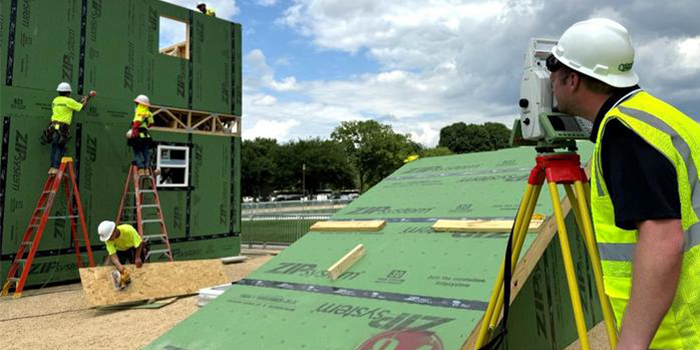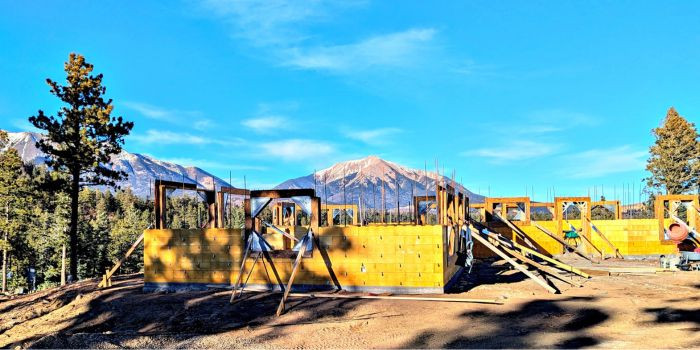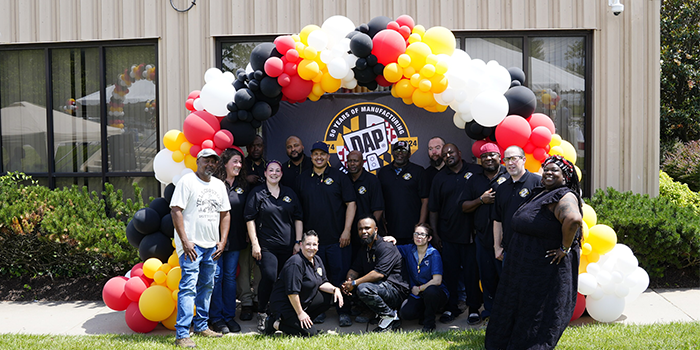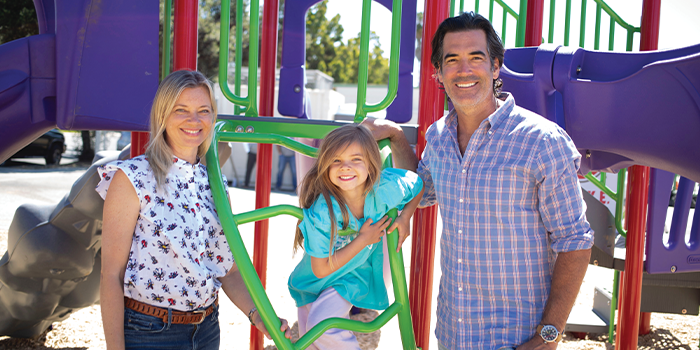ORNL Demonstrates Energy-Efficient Spray Foam Insulation at HUD Innovation Housing Showcase

WASHINGTON D.C. – June 10, 2024 – Building innovations from the U.S. Department of Energy’s Oak Ridge National Laboratory will be on display in Washington, D.C. on the National Mall June 7 to June 9, 2024, during the U.S. Department of Housing and Urban Development’s, or HUD’s, Innovation Housing Showcase.
For the first time, ORNL’s real-time building evaluator was demonstrated outside of a laboratory setting and deployed for building construction. Researchers collaborated with the Structural Building Components Association, or SBCA, to demonstrate how such technology can speed up construction by assisting in their build of a two-story duplex with prefabricated components on the National Mall June 3, prior to the official start of the event. The duplex is planned to be donated to Habitat for Humanity.
“This event provides an exciting opportunity to showcase building envelope achievements,” said ORNL’s Diana Hun, Building Envelope Materials Research group leader. “We appreciate the opportunity to help SBCA successfully construct their building by using our real-time evaluator to speed the construction pace by providing accurate measurements for precise installation.”
The real-time building evaluator tool gives workers and crane operators precise measurements and positioning directions for installing prefabricated components. This tool aims to decrease installation time and cost by more than 25%. Researchers developed algorithms to compare the location of the components during installation with a digital twin or virtual model. An autonomous robotic tracker coupled with advanced software generates real-time positioning data for installers to minimize errors and expedite installation.
Researchers will also conduct live demonstrations of several ORNL-developed building technologies including the autonomous spray foam robot and building air leak and microwave moisture detectors:
• The autonomous spray foam robot, developed in collaboration with ORNL researchers in advanced manufacturing, installs insulation foam in walls. This invention uses software and hardware that enables a 20% decrease in overall installed spray foam cost and a 10% increase in the yield of installed foam with consistent quality and thermal performance, and limits installers’ exposure to hazardous chemicals.
• The building air leak detector uses off-the-shelf cameras to quickly visualize air leaks, or drafts, through walls and roofs. The detection is based on background-oriented schlieren photography, a process used to capture fluid flow. The non-invasive technique uses small shifts in the background of a sequence of images to visualize leaking air that has a different temperature than the surrounding air. This temperature difference creates a mirage when viewed in front of a building’s façade using refractive imaging. The air leak detector also has an ORNL-developed phone application component, which allows homeowners with a camera phone to quickly pinpoint and fix air leaks. The phone application will also be demonstrated during the Innovation Housing Showcase.
• The microwave moisture detector measures the moisture content of wood using microwave radar. ORNL designed the tool to enable a non-destructive and convenient way to detect and measure moisture of materials inside the building envelope without having to remove the cladding. This enables faster evaluation of existing building envelopes before they are retrofitted and more accurate cost estimates for retrofits.
In addition to the demonstrations, attendees can speak to ORNL buildings researchers throughout the three-day event and learn about building materials that have lower embodied carbon and could be deployed within the next five years: thermal insulation, concrete mixes, sealants, adhesives and fire retardants. Easy-to-install, novel envelope retrofit technologies and advanced appliances will accompany ORNL’s materials display.
Advanced manufacturing researchers, in collaboration with the University of Maine, will also be available to discuss projects such as the 3D-printed floor cassette panel. The panels are made of a recyclable natural material with the goal of being strong enough to replace construction materials like steel. The researchers who developed the cassette are part of the Sustainable Materials & Manufacturing Alliance for Renewable Technologies, or SM2ART, supported by DOE's Advanced Materials & Manufacturing Office which also produced BioHome3D, the nation’s first additively manufactured home made entirely from biologically based materials. The SM2ART team will discuss BioHome3D and showcase a section of the 3D-printed house and host demonstrations of other related work including the floor cassette and recycled 3D-printed precast concrete molds.
“The technologies on display during the Innovation Housing Showcase represent collaboration across several Department of Energy national user facilities at ORNL,” Hun said. “We’ve used ORNL’s vast technical resources from the Building Technologies Research and Integration Center, the Manufacturing Demonstration Facility and the National Transportation Research Center and we’ve called upon the expertise of building envelope and materials, advanced manufacturing and transportation experts as well as researchers from chemical sciences and electrification to make these technologies possible.”
The ORNL innovations support the DOE’s Building Technologies Office’s goal of decarbonizing U.S. buildings by 2050 through the adoption of cost-effective technologies, techniques, tools and services that enable high-performing, energy-efficient and demand-flexible residential and commercial buildings, both new and existing. Research also supports HUD’s Innovation Housing Showcase goal of raising awareness of innovative and affordable housing designs and technologies that have the potential to increase housing supply, lower the cost of construction, increase energy efficiency and resilience, and reduce housing expenses for owners and renters.
UT-Battelle manages ORNL for the Department of Energy’s Office of Science, the single largest supporter of basic research in the physical sciences in the United States. The Office of Science is working to address some of the most pressing challenges of our time. For more information, visit energy.gov/science.
For use by SprayFoamMagazine.com & Spray Foam Magazine
Disqus website name not provided.









































